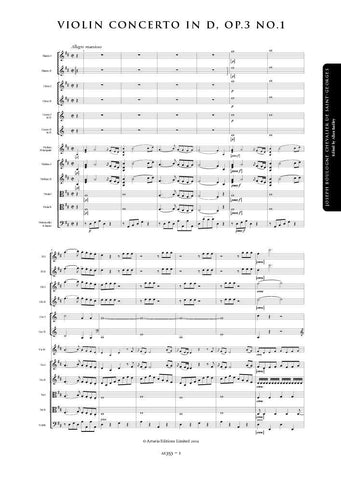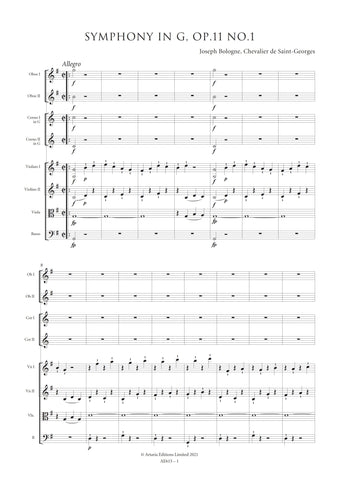Saint-Georges, Joseph Bologne de: Symphony in D major, Op. 11 No. 2 (AE616) – sheet music
Previous Product Next Product
Description |
Saint-Georges, Joseph Bologne de (1745-1799)
|
||||||||||||||||||||
Details |
In 1760s and 1770s Paris, Saint-Georges was surrounded by symphonists, such as his mentor Jean-François Gossec and friend Simon Leduc. Orchestral concerts featured symphonies by local composers, by Mannheim symphonists such as Carl Stamitz and Christian Cannabich, and by visitors, including Mozart, whose 1778 visit included a warm reception for his ‘Paris’ symphony. Saint-Georges also played or conducted most of the Paris premieres of Haydn’s symphonies in the 1770s and 1780s which gave him direct experience of the most progressive works in the genre. In spite of being at the very centre of all this activity, Saint-Georges seems not to have been particularly interested in composing symphonies. His only extant works in the genre are the two works published as Op.11 which are excellent examples of the cosmopolitan French symphonic style. The second symphony has a charmingly lively first movement, with a Haydnesque Sturm und Drang development section. Its central Andante movement echoes the contrapuntal writing of late French Baroque or early classical composers such as Antoine Dornel (1691–1764). The bustling third movement features a central minor section, with a second-violin quaver figure running beneath the sinuous theme. Interestingly, this central section evokes a similar passage from his friend Leduc’s third symphony. Leduc passed away in January 1777, and Saint-Georges programmed that symphony the very next month. It is tempting to imagine Saint-Georges’ forays into symphonic writing being inspired by his friendship with Leduc and the other Parisian symphonists. Saint-Georges later used this second symphony as the overture to his 1780 opera, L’amant Anonime (The Anonymous Lover). While the Op.11 symphonies are both preserved in engraved parts dating from 1779, the 1780 manuscript score from the opera is more accurate and is in every respect the superior source. In the finale, the engraved parts have a simplified beginning: the additional notes have been added. |
||||||||||||||||||||
Score Preview |


















